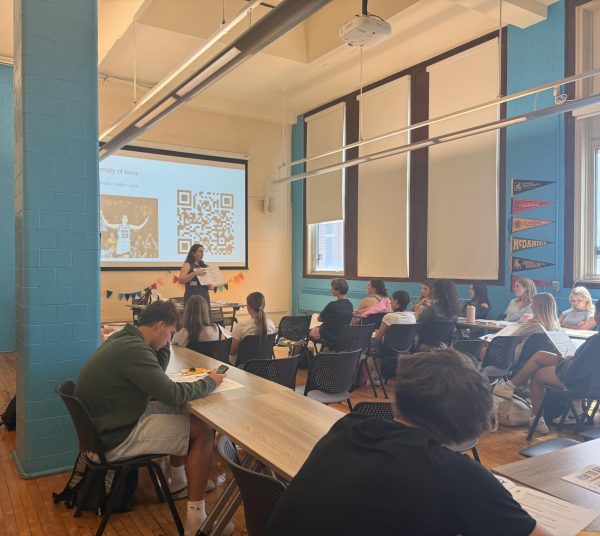The harsh realities of the attendance policy
Illustration by Maggie Nielsen
Every Lane student knows what it’s like to wake up sick and then have to perform a rigorous self-examination.
“My head hurts, my throat hurts, I have a runny nose and I think I have a slight fever.
“Okay, I’m definitely sick. But am I sick enough to miss school? What if I get sicker later this year and I’ve already used all my days to be absent? Should I just suck it up?”
This results in the final question: “What combination of Advil, Dayquil, cough drops and coffee can get me through the school day?”
Lane’s attendance policy states that students must maintain a 95% attendance rate in order to be eligible for I-Days, prom and other school activities.
The administration’s ostensible reason for the stricter attendance policy relates mostly to an improvement in student academic performance, but it can be reasonably inferred that it is also a result of Lane’s fixation on maintaining its ranking.
The School Quality Rating Policy, or SQRP, is a means of rating CPS schools based on a myriad of factors including student test scores, graduation and attendance rates.
Typically, when schools have higher rankings, there is a higher number of applicants, thus resulting in larger populations. Because of CPS’ student-based budgeting, a larger student population translates to more funding. So while ranking does not directly impact how much funding a school gets, it can foreseeably have an influence.
Lane is currently ranked the highest at 1+, according to CPS’ website.
We all benefit from a higher school ranking because of the increased funds that the school receives.
It makes sense, for this reason, that administration would strive to keep us at the top, but they should be more understanding with their absence policy.
To maintain a 95% attendance rate this school year, a student can miss up to eight school days.
Eight days might seem feasible for an average student, but what if you factor in sick days or religious holidays?
It’s no wonder that students are coming to school sick or opting to go to class instead of going to the temple on Yom Kippur.
While it is worth noting that students can get exemptions from this policy for extenuating circumstances such as religious holidays, hospitalization or a death in the family, these exemptions are not commonly known. Many find themselves ineligible for exciting school activities because they simply didn’t know they could get their days exempted. We assume that these exemptions are not advertised because administration fears that students will take advantage of them and try to find loopholes in the seemingly air-tight attendance policy, but this comes with unintended consequences.
A student won’t consider trying to have their event eligibility restored if they are unaware that missing school for a religious holiday doesn’t have to count against them.
In addition, the make-up days caused by the CTU strike should be taken into account when making exemptions since many students made plans in September that they cannot change.
We know that the administrators are creating what they view as fair policies in an attempt to balance the school’s expectations for students as well as the district’s expectations for the school. However, the current attendance policy needs to be more realistic about how many days a student is allowed to miss, and administration needs to make more of an effort to inform students that exemptions can be made for extenuating circumstances.
While these rules can be found hidden in the Student Code of Conduct, it is unrealistic to expect already busy students to spend their time digging around to locate the attendance policy.
Lane should advertise the fact that holidays and hospitalizations are exempt, as well as inform students about the ways they can reduce demerits so that eligibility can be restored.
We understand that the administrators have a desire to have a high attendance rate, but Lane should understand that the key to a student’s success is a balance between academic and social responsibilities.
By enforcing overly strict attendance rules, Lane ruins that balance that students work so hard to cultivate.
At the very least, administration should open up a dialogue, perhaps bi-monthly “office hours” between students and administration, so that staff can get student feedback on how the policies that are supposed to benefit students actually affect them.
Staff Editorials represent the majority view of the Warrior’s Editorial Board.
Your donations directly fund the Lane Tech student journalism program—covering essential costs like website hosting and technology not supported by our school or district. Your generosity empowers our student reporters to investigate, write, and publish impactful stories that matter to our school community.
This website is more than a publishing platform—it's an archive, a research tool, and a source of truth. Every dollar helps us preserve and grow this resource so future students can learn from and build on the work being done today.
Thank you for supporting the next generation of journalists at Lane Tech College Prep!

Maggie Nielsen and has been writing for the Warrior since the fall of 2017. She is the president of Podcast Club, a member of Printmaking Club and runs...










